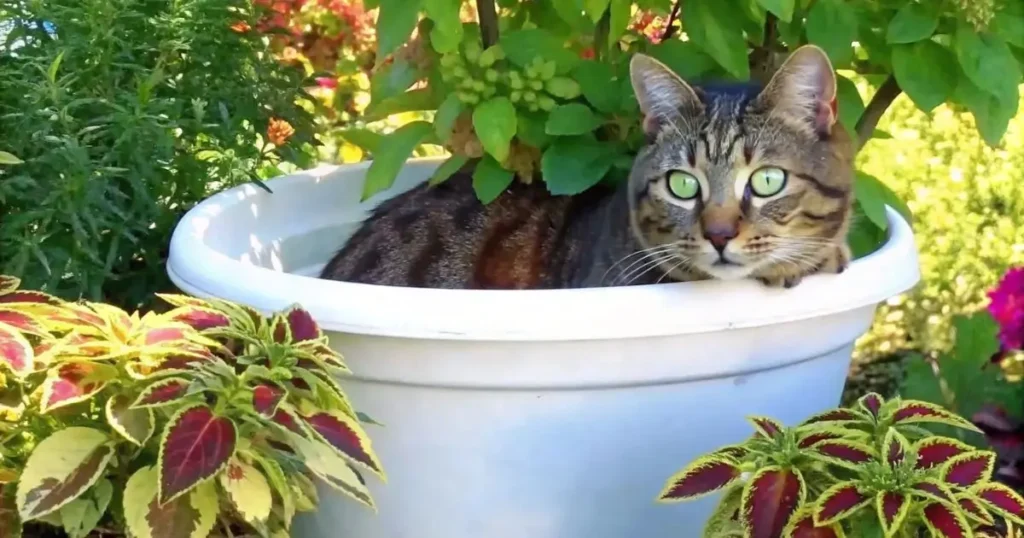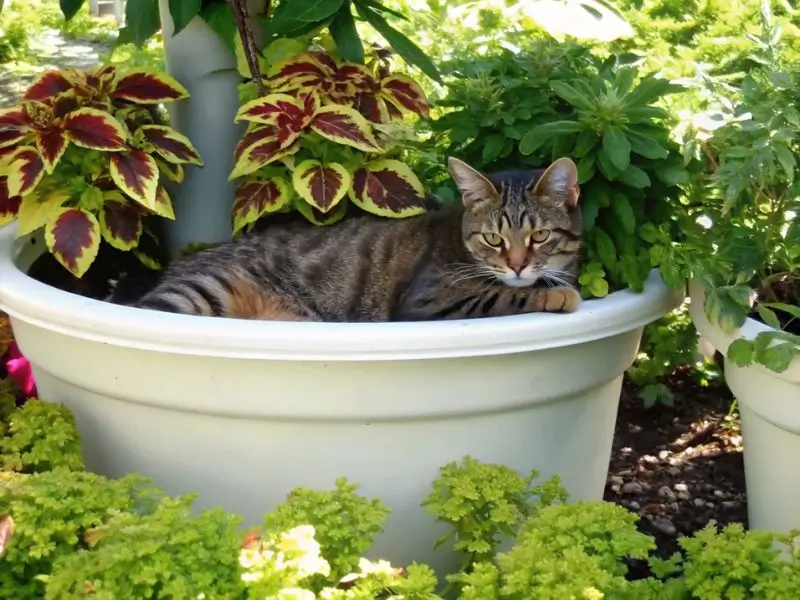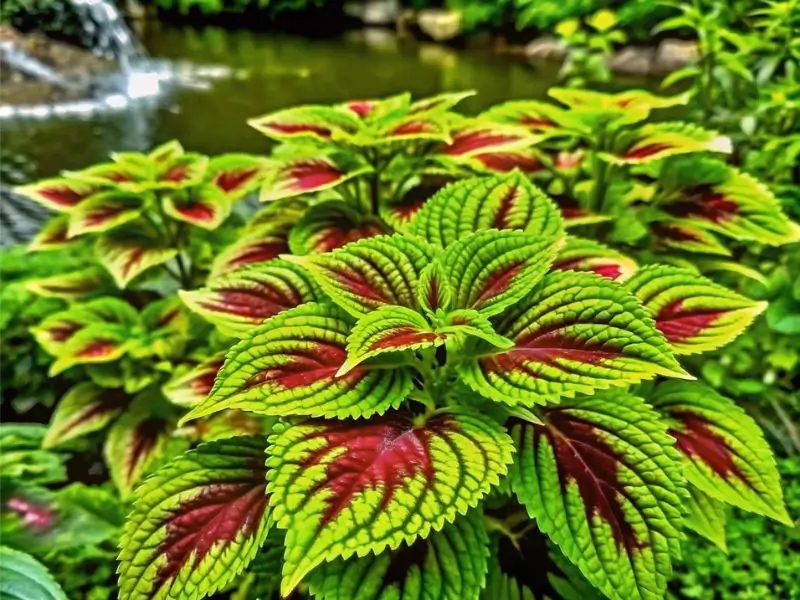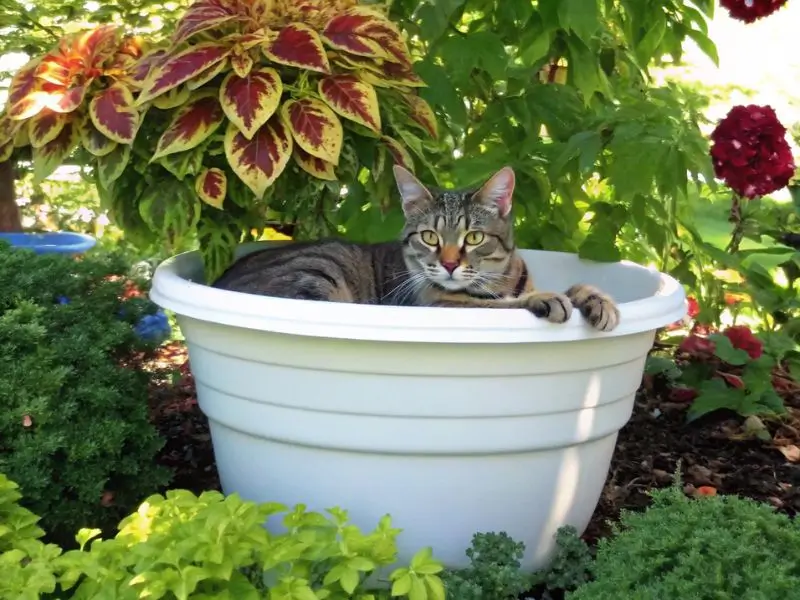
Curious about whether black dragon plants pose a risk to feline companions? This guide answers the question, “Is black dragon plant toxic to cats?” while offering helpful tips, warning signs to watch for, and safe plant alternatives. After reading, you’ll feel more confident about creating a cat-friendly home environment without sacrificing style or the thrill of exotic greenery. Let’s dive in and explore this intriguing plant. Peace of mind awaits.
Table of Contents
Understanding the Black Dragon Plant
What is the Black Dragon Plant?
The black dragon plant frequently shows thick, deep-green leaves that verge on black under certain lighting. Many plant enthusiasts love its dramatic color, especially if they favor a modern or edgy decor style. I first ran into this plant online in early spring, right around the time I was redecorating.
But as soon as I spotted it, I wondered, “Is black dragon plant toxic to cats?” The moody name and unusual appearance can raise suspicions. In truth, several different species might carry this nickname, which sparks confusion.
Growth Basics
- Survives best in moderate or indirect light.
- Thrives with slightly moist soil but dislikes soggy conditions.
- Stays comfortable in typical indoor temperatures—avoid drafty spots.
Characteristics and Appearance
Despite the varied species, black dragon plants typically share incredibly dark foliage, sometimes appearing glossy, other times with a faint purple undertone. In bright light, some leaves look charcoal or even navy. Their exotic silhouette can be the highlight of any living room or office. For plant lovers aiming to add a hint of mystery, it’s a standout choice that inevitably draws the eye.
Why Pet Owners Are Concerned About Black Dragon Plant Toxicity
Common Reasons for Toxicity Concerns
When you have a cat (or multiple cats) that loves to explore, curiosity can lead them to every corner of your home, including new additions to your plant collection. Because of the clever name and dark appeal, people often suspect the black dragon plant might carry toxic properties. If you’ve ever typed “Is black dragon plant toxic to cats?” into an online search, you know there’s a swirl of varied information out there.
While many ornamental houseplants contain irritating sap or minerals, owners naturally get anxious when uncertain data circulates. Nobody wants their cat biting into a possibly dangerous leaf. Social media amplifies panic, since one alarming story can circulate and leave others fretting.
Reports from Pet Communities
In Facebook groups and other pet forums, experiences differ. Some people claim their kitty chewed a black dragon leaf and displayed no ill effects. Others say their cat had mild drooling or vomiting. This patchwork of stories leaves owners confused. When stuck between “safe” and “dangerous,” folks circle back to the question: “Is black dragon plant toxic to cats?” and proceed with caution.
Is black dragon plant toxic to cats?

Identifying Possible Toxic Components
Let’s tackle it head-on: Is black dragon plant toxic to cats? Whether this plant is an actual threat depends on its specific species. Some variants may have compounds similar to calcium oxalate crystals, known to irritate an animal’s mouth and digestive tract. Others might be relatively benign but still require care, as cats can have unpredictable reactions.
Because “black dragon” isn’t a strict botanical term, it might refer to multiple hybrids. If you’re tracking down info on your exact plant, try locating its scientific name. Doing so can clarify whether it sits among toxic houseplants or more pet-friendly varieties.
Scientific Findings and Expert Opinions
Many vets and horticulture experts advise caution if a plant carries even a slight toxic rumor. I personally prefer to keep questionable greenery far from my cat’s favorite spots. It’s also wise to revisit that core question—“Is black dragon plant toxic to cats?”—every time you consider a distinct cultivar. A little vigilance now can save stress later.
Signs and Symptoms of Plant Poisoning in Cats
Gastrointestinal Symptoms in Cats
Anyone with a curious cat knows they can mouth something new in seconds. If your kitty tears into a leaf and you suspect black dragon plant ingestion, watch for:
- Vomiting or retching soon after the incident.
- Foaming or drooling around the mouth.
- Reduced appetite or complete food refusal.
I’ve had a scare where my cat gagged a few hours after encountering a mysterious new plant. It’s anxiety-inducing. If you’re repeatedly asking, “Is black dragon plant toxic to cats?” and you see these signs, contact a vet right away.
Additional Gut Clues
- Diarrhea or unusual bowel movements.
- Excessive swallowing or pawing at the mouth.
- Restless pacing or hiding.
Behavioral Changes and Warning Signs
Some poisoned cats become reclusive or uncharacteristically vocal. Stumbling, heavy breathing, or extreme lethargy are all red flags. Listen to your gut—call your vet if behavior seems off. Early intervention often makes a huge difference in outcome.
How to Keep Cats Safe from Potentially Toxic Plants

Preventative Measures for Pet-Friendly Homes
Nurturing an extensive plant collection while safeguarding your cat’s health does take planning. Here’s what I do:
- Hang plants high on sturdy hooks, because my cat can’t levitate (yet).
- Offer cat grass: It diverts chewing impulses toward safe greens.
- Use tall or narrow shelving: Tougher for a cat to climb if it’s precarious.
- Check chemical usage: Go gentle on fertilizers or pesticides.
Creating a Non-Toxic Environment Indoors
Keep an eye on indoor bouquets, too. Some cut flowers pack hidden dangers like lilies. Big-box store houseplants might also land on the “risky” list. Always do a quick search before purchasing. If you still wonder, “Is black dragon plant toxic to cats?” talk to a knowledgeable nursery worker or veterinarian. Clarifying details at the start prevents heartbreak later.
Safe Alternatives to the Black Dragon Plant
Cat-Friendly Houseplant Options
If you’re wary about possible toxicity but yearn for an exotic vibe, consider these safer picks:
- Spider plants: Easy upkeep, with cute baby offshoots.
- Boston ferns: Provide a lush, feathery look.
- Calathea: Known for vibrant, patterned leaves that wow visitors.
I keep a few spider plants around, mostly because they’re low fuss and my cat rarely shows interest in them. Also, they look pretty neat in hanging baskets.
Other Low-Toxicity Favorites
- Parlor palm: Tropical flair, great for corners.
- Prayer plant: Folds its leaves at night, which is fascinating.
- Echeveria: Many succulents in this family are labeled “safe,” but always confirm.
Low-Toxicity and Decorative Selections
Moody decor doesn’t depend solely on plant leaf color. Dark pots or creative arrangements can offer a stylish contrast. If you’re questioning “Is black dragon plant toxic to cats?” but still crave drama, let your pot design supply that edge. Decorative stones, unique planters, or whimsical stands all enhance your space without risking kitty’s health.
Steps to Take if Your Cat Ingests Black Dragon Plant

Immediate First Aid Measures
If you spot your cat chewing on a black dragon leaf:
- Check its mouth for any leaf fragments, removing gently if possible.
- Offer fresh water: It might lessen minor irritations.
- Collect the plant sample: Take it along if you visit the vet.
- Call your vet: Don’t hesitate; even mild symptoms merit a quick consult.
Basic Don’ts
- Don’t induce vomiting unless specifically directed by a vet.
- Don’t try untested home remedies.
- Don’t ignore mild symptoms—they can worsen without intervention.
When and How to Contact a Veterinarian
Some cats show mild signs that fade quickly, but serious symptoms like heavy breathing, severe drooling, or collapse demand urgent attention. Clinics often have emergency numbers—try to keep yours on the fridge or in your phone. Also, official sites like USDA.gov offer general references for plant safety, though a vet’s voice is best for immediate help.
Common Myths vs. Facts About Plant Toxicity
Debunking Misconceptions
I’ve heard myths like “Cats instinctively avoid poisonous plants.” In reality, cats can be driven by curiosity or even boredom. Another common belief? “Only kittens chew up random items.” But adult cats often return to kitten-like behavior, especially if they’re bored.
Some folks think any plant with dark leaves is automatically a threat. Others assume color doesn’t matter. If you keep circling back to “Is black dragon plant toxic to cats?”, remember that appearances and color alone don’t reveal toxicity. Understanding the chemistry matters more.
Myth vs. Reality Quick Hits
- Myth: Popular houseplants can’t be toxic.
- Reality: Many commonly sold varieties cause issues if ingested.
- Myth: No immediate symptoms = safe.
- Reality: Some toxins display delayed effects.
Evidence-Based Insights on Pet Safety
Veterinarians and scientific studies confirm that certain plants pose reliable risks. Because “black dragon plant” is a loosely used term, verifying the species is crucial. Taking the precautionary path—assuming potential toxicity—can save you from frantic midnight vet runs later.
FAQs
How do I know if my cat ate something toxic?
Look for drooling, strange meowing, or leaf bits on the floor. Cats might pull away if you touch their mouth or seem hesitant to eat. Persistent gagging or repeated swallowing also hint at trouble brewing.
Quick Tip
- Check your cat’s gums for redness.
- Scan the area for chewed plant fragments.
Can Black Dragon Plant Grow Indoors Safely with Pets?
Yes, with caution. Some owners isolate it in a locked office or a high, inaccessible shelf. If you’re still asking, “Is black dragon plant toxic to cats?” consider how acrobatic your cat is. Certain felines can scale nearly anything if they’re determined!
Which Plants Are Most Toxic to Cats?
Lilies rank high on the danger list, potentially causing severe kidney issues. Others include dieffenbachia, philodendrons, and sago palms. The ASPCA website has comprehensive listings for quick reference.
Are Succulents Safer for My Cat?
Many succulents, especially echeveria types, don’t cause major harm. However, euphorbias can irritate mouths and skin. Verify each variety before buying.
What Are the First Steps in Feline Poisoning Treatment?
Call your vet immediately, describe symptoms, and follow their instructions. Rapid action often means a better outcome, and a small sample of the plant helps quick identification.
Expert Recommendations and Final Thoughts
Veterinarians’ Advice on Toxic Houseplants
Generally, vets suggest a safety-first approach with any plant rumored to be dangerous. If you love the look of the black dragon plant, consider:
- A dedicated plant room that stays off-limits to cats.
- Ceiling-mounted planters so your cat can’t reach.
- Behavioral redirection with interactive toys to reduce boredom-driven nibbling.
When confusion remains around “Is black dragon plant toxic to cats?” it’s wisest to keep it far from prying noses. Some nursery staff can provide clarity if they know your exact plant species. And if you’re fascinated by the plant’s lore, PlantZenith.com offers a glimpse into its background.
Final Tips
- Remove drooping leaves that tempt playful kitties.
- Keep a reference list of plant toxicity levels.
- Locate emergency vet contacts now—don’t wait for a crisis.
Conclusion: Keeping Your Cat Safe Around the Black Dragon Plant
In short, Is black dragon plant toxic to cats? Possibly, given that multiple species use this ominous nickname. If you’re uncertain, keep it out of reach or pick a safer alternative. With mindful placement and a bit of research, you’ll maintain a stylish home environment while minimizing risk to your feline friend. Just remember, no fashionable foliage is worth a cat’s well-being. Peaceful coexistence between plants and pets truly is possible!
